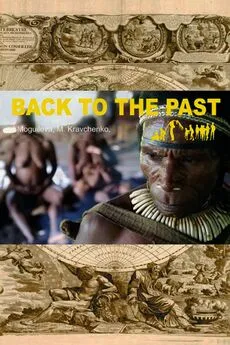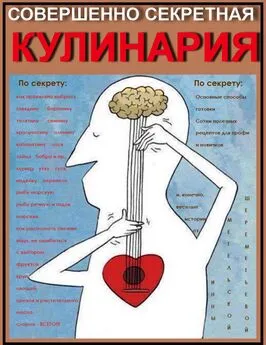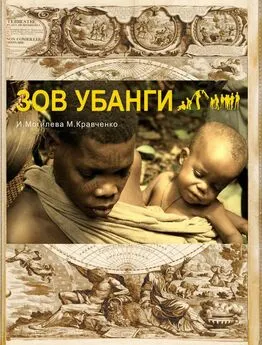Инна Метельская-Шереметьева - Back to the past
- Название:Back to the past
- Автор:
- Жанр:
- Издательство:Литагент Selfpub.ru (искл)
- Год:2017
- ISBN:нет данных
- Рейтинг:
- Избранное:Добавить в избранное
-
Отзывы:
-
Ваша оценка:
Инна Метельская-Шереметьева - Back to the past краткое содержание
Back to the past - читать онлайн бесплатно ознакомительный отрывок
Интервал:
Закладка:
A documentary-fictional tale
From the author
Dear reader,
It is my pleasure to present to you a documentary-fictional tale of an amazing trip which was undertaken by some of my friends in 2005–2006.
At the moment of the events being described in the book, our compatriots had practically not visited or studied the territory of Irian Jaya (one of the Indonesian states on the island of New Guinea). Therefore, the book’s main characters are pioneers in a certain sense of the word. All the facts, events and people mentioned in the story are real. I only assumed the responsibility of completing the images of the main characters, and I had a good reason to do so. During the expedition, the travelers did not make any voice recordings. What I had at my disposal was Alexey Semyonov’s documentary diary, an archive of unique photos and videos brought back from New Guinea, and my friends’ stories, which I enjoyed listening to every word of during long winter evenings. I took a risk and presented these stories with a certain portion of fiction added to them in order to be able to get across to the readers all of the emotional intensity and all those nuances of impressions and experiences which I felt throughout our conversations.
The book is composed of several separate stories of the expedition’s participants. Their interests here were taken into consideration. This is why they are all fully legitimate co-authors of the book “Return to the Past”.
Thus, Andrey and Alexander, in particular, took photos and shot video of those places and tribes which the book tells you about. They recorded the main events, locations and dates along the route. Looking at their own pictures afterwards, they very vividly and graphically described those nuances which had slipped by their cameras.
Following long-standing tradition, Alexey studied the everyday life and ceremonies, as well as explored the traditions and rituals, of the ancient tribes.
Michael was interested in the specific historic, geographic and ethnographic facts and special issues of the native philosophy which exists as if in parallel to our own world, next to it… or beyond it to be precise…
This is why the reader of this book will be able to observe the chronological events described in different chapters as well as a whole range of ‘deviations’ which will help to make the story of the journey more vivid and picturesque, and fill it with documentary facts.
I hope you enjoy the story of the trip to the Vanishing World of Irian Jaya.
Inna M. (on behalf of the co-authors).
Introduction
Since the world managed to fit into a laptop screen and tourist agencies, as if in collusion, promised to provide us with guaranteed spots in a five-star beach heaven during any season, life has become absolutely dull.
You just have to go on-line to look into such an unlimited range of opportunities that was far beyond Mr. Cook’s, Mr. Magellan’s or Mr. Mikluho-Maklay’s dreams. Longing for new discoveries, ravishing dreams of unknown countries are slowly losing their shine and getting quite dusty on the shelves of many modernized souls, deadly pinned by the leading tour operator’s polite but perfunctory question, “What would you like?”
Nowadays, one can easily order swimming in an ice hole in the company of a polar bear, a diving tour down to the Titanic, climbing up the Empire State Building without a safety harness or black African buffalo hunting with a lariat – anything is available. But the stubborn brain rejects this whole sugary excuse for entertainment in the same way it rejects genetically modified soy hamburgers and milk which stays fresh for up to 6 months. We still remember that feeling of true admiration when we hung on every word of our favorite TV presenters who told us about the unsolved mysteries of the planet Earth from black-and-white TV screens. Senkevich. Drozdov. Peskov. And Durrell’s books… as well as Cousteau’s documentaries… What about Brehm’s books which were read to tatters? We still remember the times when we skipped our classes in universities to listen to Bromley’s seminars on ethnography in the Lomonosov Moscow State University and Puchkov’s lectures in the Peoples’ Friendship University. And to believe that today there’s not a single place on Earth which has not been ‘refined’ by Coca-Cola advertisements, would mean to forget – or to betray our childhood.
No, no! I’m not talking about anything romantic here. Because having grown up, become wiser and acquired our own children and rather successful businesses, each of us is quite capable of arranging a ‘first class’ romantic trip for himself and his friends, but what you really want is something real, masculine and off the beaten track. We are four mature and, I would like to believe, wise men, whose cumulative age is just over 180 years old and whose business interests cover commerce, furniture production and publishing. There is even a famous TV cameraman among us. It just happened that for several years already during our free time we have been exploring the less studied tribes and regions of our planet. Our routes very often cross with the paths of Prof. Drozdov and his TV program about animals. Even more often we travel on our own. We wouldn’t risk putting a ‘traveler’ job on our CVs the same as we haven’t turned our hobby into a business (thank God for that!). But having wandered through quite a large number of countries we thought it possible to publish a small part of our impressions, which could be of some use for our comrades-in-arms – travelers and lovers of adventure of all kinds.
Chapter One
Straight for the Pampas!
Andrey’s Story
To word the task correctly is a job half-done. Well… our second-to-last expedition was set in the state of Irian Jaya in Indonesia. It is the western part of New Guinea, which we were lucky to visit last year and which we swore to visit again. We had many reasons to do that. We considered our previous trip to be a reconnaissance mission and a motive to study books carefully, to try and search the depth of the Internet for the missing puzzle pieces of our knowledge and to lay, so to put it, the theoretic grounds for our return. Naturally, we weren’t talking about learning a couple of Papuan dialects or even attentively going through such interesting works by the outstanding explorer of these lands Professor of Ethnography Pavel Nikolaevich Puchkov. We worded our task as a much more modest and practical one. No matter how you wanted to put it, we were rather seriously limited in time for our expedition. This is why we looked for the most interesting facts in all the scientific or would-be scientific works which we went through. In particular, we wanted to make sure that relict species of blue rhinos still existed in the National Park of Ujung Kulon, or that the tribe of the legendary troglodytes, whose remains were found on Flores island, was not a myth created by journalists. Surely, we also hoped to visit once again the lost forests of Irian Jaya in order to see the island’s native residents and their stone age style of life with our own eyes.
Naturally, this last Irian Jaya part of the trip interested us the most. After studying the few existing sources, we learnt that since May 1, 1963 Western Irian (which is an Indonesian name for New Guinea) has been a part of the Republic of Indonesia as a liberated territory. The surface area of Western Irian is 412,781 sq. kilometers and its population is 700 thousand people. Western Irian includes several islands off the south-eastern coast. Mapia, Yapen, Biock, Missol, Waigeo and Salavati are among the largest of them. Out of all these islands Biock is the only one which is slightly familiar to Russian tourists and travelers: divers’ cruises depart from there a couple times a year.
The capital of Western Irian Jayapura is much less known among Russians. The small provincial town (something similar to the Moscow region town Podolsk by our standards) used to be called Hollandia, then Kota Baru, and later it was renamed Sukarnopura. Until 1963, Western Irian had been a Dutch colony called Dutch New Guinea. This is where such a variety of names for the capital comes from – paying respect to the periodically changing ‘landlords’.
However, today Jayapura is quite a civilized port town where native residents enjoy a comfortable life together with all kinds of Indonesian officials. Admittedly, the majority of them are nice and polite people who follow a typical Asian philosophical principle: the less you hurry, the fewer problems you have. An independent traveler who made it on his own from Jakarta to, let’s say, Jayapura, won’t practically have any problems in his further travels around the island. One can get a special pass to the internal territories of the island either on his/her own at the police station or with the help of an airport volunteer guide who meets flights at the airport and volunteers to help for a symbolic amount of money. “A symbolic amount” is 2-5 US dollars but for many Jayapura families this means a week’s or even a month’s salary.
Before going deep into the jungle of Irian Jaya, I would like to keep you a little longer in the state capital so you could better feel the local flavour of New Guinea, fully enjoy the sunsets on the most beautiful island of Sentani and visit a small uninhabited island where we were taken by the local fishermen who took pleasure in taking us there in spite of their surprise at our request. Let me explain the latter: the local population is not very spoiled by the tourists’ attention, so any request, even such a common one as to show someone around, elicits enthusiasm and delight.
Due to the capital status of the town, its 150 thousand residents have a few of their own factories, plants, some hotels and restaurants, and even their own local university. Two more touching features of Jayapura are the number of family temples per person and the total love among Jayapurians for chess. And if the latter can in no way be explained (they are unlikely to have read something about our Vasyuki and like Ostap Bender dreamed of turning their native town into the world chess capital), the family religious houses are probably the result of many missionaries’ preaching. We have seen Catholic chapels (we don’t even know what they should be called in fact), Buddhist temples as well as Muslim mosques. They all look approximately the same – a small construction of wood, palm-tree leaves, and cardboard and asbestos sheeting, generously decorated with drawings on various religious topics and located right in the house’s yard. There are very well-taken care of flower beds and sculptures of certain gods in front of these small buildings, as well as some tape-recorder speakers whose loud music informs the locals and tourists that the temple is open. A special box for donations is nearby too. This is how it goes: go into the place, say your prayers, listen to some music, leave a donation and go on your way. It looks like the missionaries have failed to explain to the locals that religion is not another way to make money but something very different. But, anyway, decade by decade the missionary reports stated the steadily increasing number of established parishes and converted people. As for Jayapurians, they started seeing new temples as a given. We have them now – it’s good. They make us feel good – it’s even better. That said, their attitude towards life and God (the gods) is much more understandable than the rabid fanaticism of some faiths.
To the east of Jayapura by the coast of Yos Sudarso Bay there is Yotefa National Park with lots of beautiful beaches where you can see several shipwrecks, the result of past naval battles.
Читать дальшеИнтервал:
Закладка:





![Инна Метельская-Шереметьева - Кулинарная КОНСЕРВАтория [Проверенные годами и поколениями рецепты заготовок от классических до экзотических] [litres]](/books/1060030/inna-metelskaya.webp)




